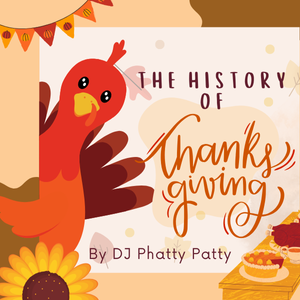Thanksgiving, celebrated on the fourth Thursday of November in the United States, has a rich history that dates back centuries. It’s a holiday that brings families and friends together to share a meal and reflect on what they’re thankful for, but its origins are rooted in both early American history and Indigenous traditions.
The most well-known story of Thanksgiving goes back to 1621, when the Pilgrims at Plymouth Colony in present-day Massachusetts shared a meal with the Wampanoag people. The Pilgrims had endured a difficult first winter, with many of them dying from harsh conditions. However, by the fall of 1621, their crops had finally been harvested, and they had enough food to celebrate. The Wampanoag, who had helped the Pilgrims learn how to grow crops and hunt local wildlife, joined them for a feast to celebrate the harvest. While turkey was likely part of the meal, other foods like venison (deer meat), corn, seafood, and squash were probably on the menu. The gathering was peaceful, with both groups coming together in a spirit of cooperation and mutual support. This event is often considered the “First Thanksgiving.”
For the next few centuries, Thanksgiving wasn’t an official national holiday. Instead, it was celebrated at various times and for different reasons. Sometimes it was a day of thanks for a good harvest or a military victory. Each colony or community could choose when to have a day of thanksgiving. In fact, Thanksgiving observances were not widespread or consistent across the country.
It wasn’t until 1789 that the idea of a national Thanksgiving was brought forward by President George Washington. After the U.S. won its independence from Britain, Washington declared a national day of thanksgiving to give thanks for the successful ratification of the U.S. Constitution. He suggested that Americans celebrate on November 26, 1789. This was the first time a national Thanksgiving was declared, but it was still not an annual holiday.
The push for an official, nationwide Thanksgiving holiday continued into the 19th century, thanks to Sarah Josepha Hale, a magazine editor and writer. Hale, best known for writing “Mary Had a Little Lamb,” campaigned for years, writing letters to presidents and government leaders, urging them to make Thanksgiving a national holiday. She believed it would help unite the country during times of division. In 1863, during the Civil War, President Abraham Lincoln finally took up Hale’s cause and declared Thanksgiving a national holiday, set to be celebrated on the last Thursday in November. Lincoln hoped the holiday would give Americans a chance to reflect on their blessings, even during a time of great conflict.
Thanksgiving continued to evolve over the years. In 1939, President Franklin D. Roosevelt moved Thanksgiving up one week to extend the shopping season during the Great Depression. This change caused confusion, and after two years, Roosevelt signed a law setting Thanksgiving back to the fourth Thursday in November, where it remains today.
Today, Thanksgiving is celebrated with a feast that often includes turkey, stuffing, mashed potatoes, cranberry sauce, and pumpkin pie. Families gather to enjoy these foods and spend time together, watching parades, football games, or simply reflecting on what they’re thankful for. While the holiday has changed over time, it continues to hold a special place in American culture as a time to give thanks and celebrate togetherness.
